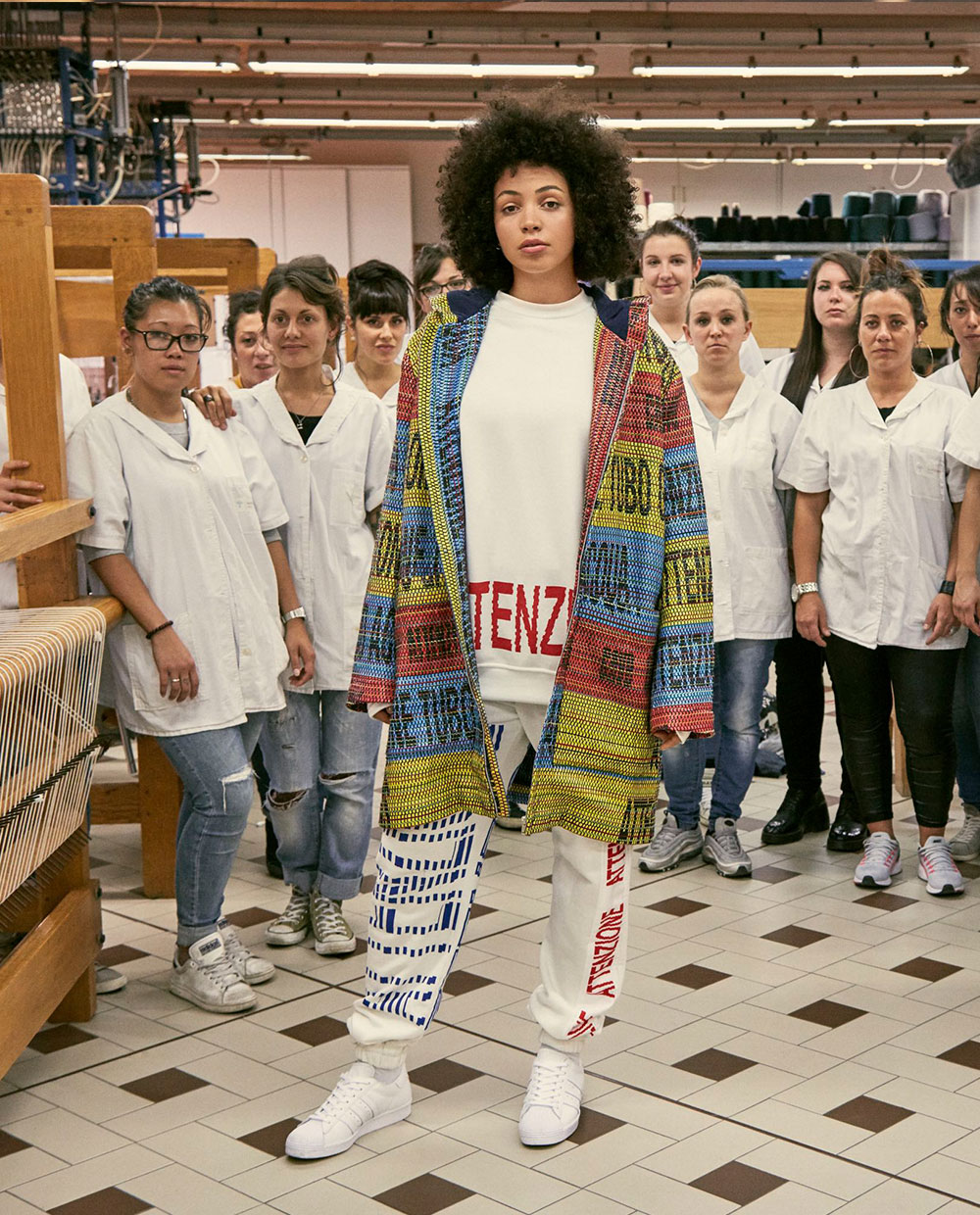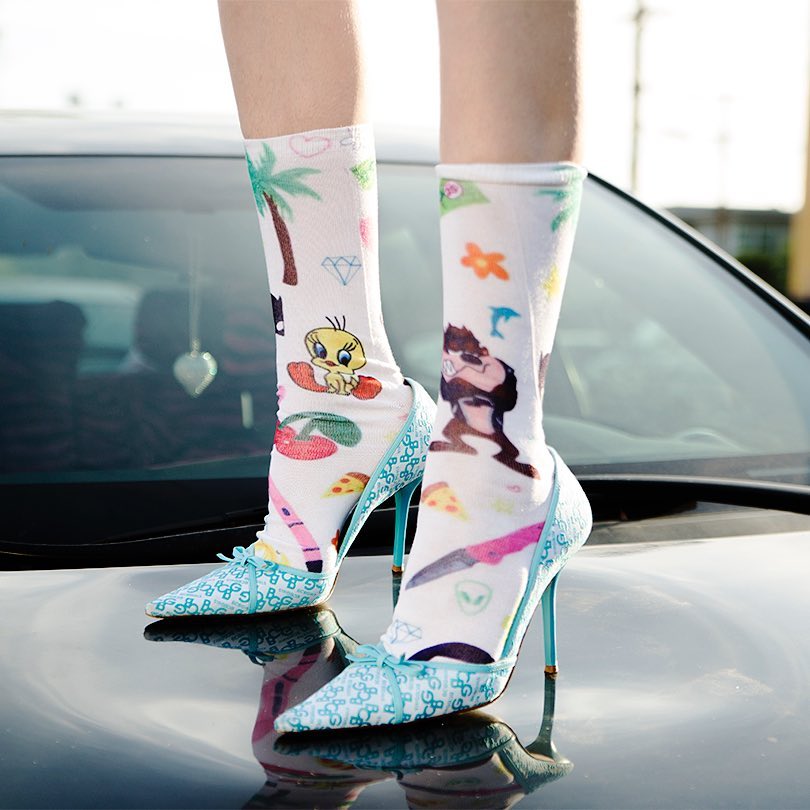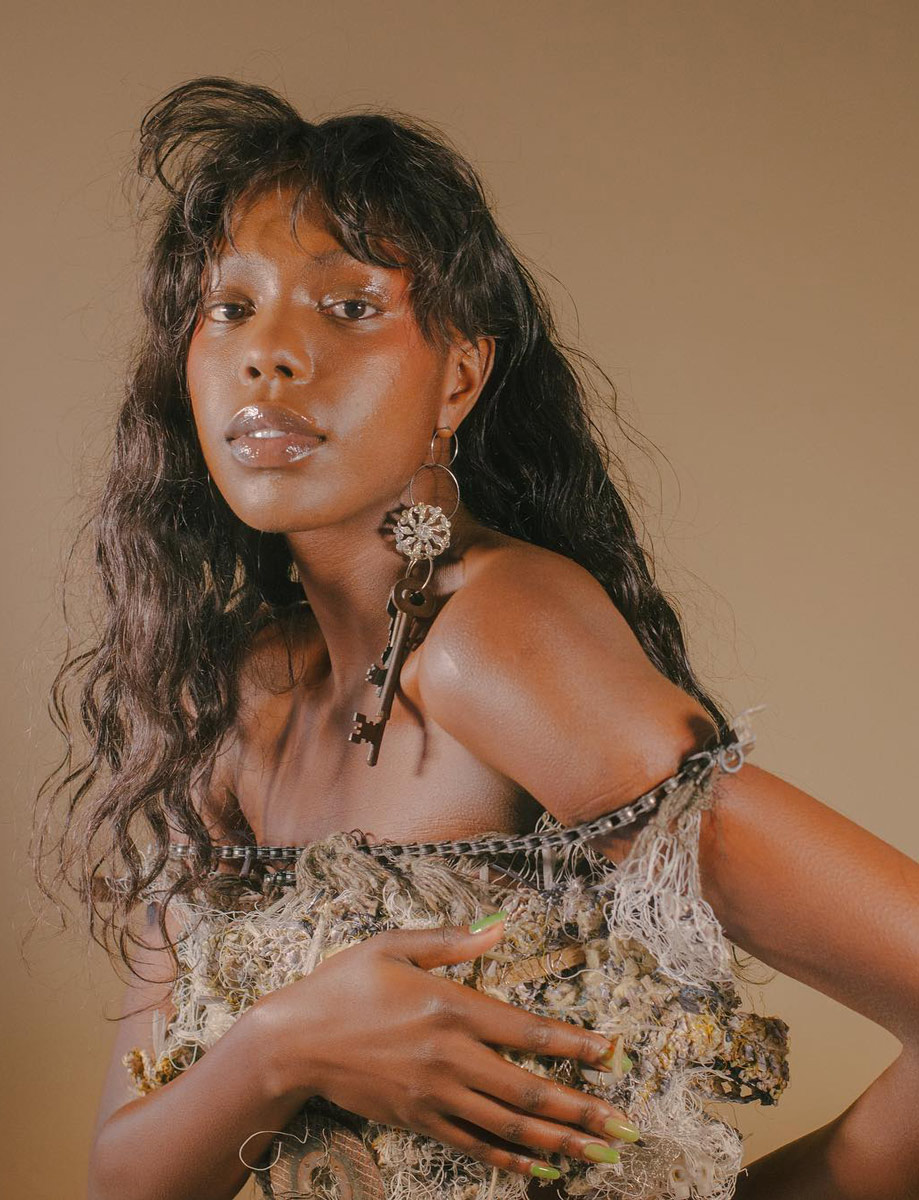Kevin Germanier
Winner of the Ecochic Design Award in 2015, Germanier’s vision of sustainability involves upcycling and using factory cast offs, or ‘making clothes out of trash’ as he puts it. The designer enjoys working within the ‘limits’ of sustainable design; his collections are shaped by the materials that are available to him, and this is what makes his work interesting. Take the story behind his most recent collection. While working in Hong Kong (as part of his Ecochic prize) Germanier noticed bead manufacturers there don’t recycle or even burn imperfect beads, they bury them in the ground instead. He ended up bringing kilos of salvaged beads back to London and making dresses out of them. In the past he’s fashion clothes from his dad’s old collection of Swiss Army blankets – Germanier himself is Swiss. If you needed any more convincing, Bjork is a fan – she wore one of his dresses for a recent Utopia press shot.
BITE Studios
https://www.instagram.com/p/BgE5LqgBPTe/?hl=en&taken-by=bitestudios
The collective behind this emerging London and Stockholm-based brand are intent on creating luxury fashion that’s sustainable. Their approach is holistic, taking into consideration the people that make their clothes as well as what the clothes are made of. They pay all their employees a living wage, use only natural and organic fibres, and all their clothes are made in London (except their denim which comes from Italy). With their white shirts and wide legged trousers they’re developing the notion of ‘timeless design’, that is pieces which work across the year rather than only seasonally.
Bethany Williams
This menswear designer ticks a lot of sustainable boxes: her clothes are all made in the UK, she works with local craftspeople and she uses organic materials. But for Williams sustainable design doesn’t stop at clothes. She believes fashion should actively engage with social issues, and her work tries to bring about change in practical ways. For her ‘Breadline’ project she partnered with Tesco and Vauxhall Food Bank to create a fruit and veg exchange which aimed to address food wastage and food shortages simultaneously. Some of the accompanying clothes were made from cardboard donated by Tesco, and 30% of the profits went to the food bank. ‘Women for Change’, her most recent endeavour, saw her working with women from the San Patrignano drug and alcohol dependency program and a prison in Surrey.
Awaveawake
These exceptionally well-cut slip and wrap dresses have been worn by some of the best- dressed women in music. Solange and friends stepped out in a selection of the dresses for her ethereal(/envy inducing!) 30th birthday celebrations in White Sands, and she also wore one for her ‘Don’t Touch My Hair’ video. Rihanna, a consistent champion of young and emerging designers, has also been spotted in one. The dresses owe their dreamy colours to natural dyes; designer Jaclyn Hodes uses botanical dyes in order to mitigate the damage done to water supplies by chemical dyes, and they’re all made from ethically sourced fabrics.
John Alexander Skelton
The Yorkshire-born designer has just put on a catwalk show at the V&A as part of its Fashion in Motion series, a showcase of the best contemporary designers that’s previously featured Yohji Yamamoto and Gareth Pugh. His knowledge of class and history is embedded in his work; collections have referenced obscure studies of the lives of Northern mill workers and key moments in the development of the cotton trade. Conceptually his clothes are a nod to a time
when mending and repair was an intrinsic part of clothes ownership, and this bleeds into his embrace of sustainability. He uses local materials and resources, like British yarn rather than fleece from Australia or New Zealand. Plus he has a novel approach to up cycling, eschewing clothes that are second hand or ‘vintage’ for actual antiques.
AURIA
Plastic is a problem. Last week the mass of plastic and rubbish currently floating in the Pacific Ocean was revealed to be twice the size of France, and it’s growing exponentially. Diana Auria’s solution is to put plastic back into the ocean in a totally new form. Since 2013 she’s been making swimwear from ECONYL yarn, a material that’s created using Nylon 6 extracted from old fishing nets. Nearly half (!) the weight of the Pacific Ocean garbage patch is made up of discarded nets, so processes which recycle them are vital. The designer is also keen to explore other innovative ways of recycling materials, she recently worked with Sony to turn old headphone wires into beach bags and sunglasses.
Liked this? Head over to our list of 20 t-shirt brands to watch in 2018.






